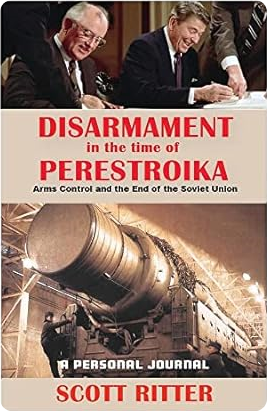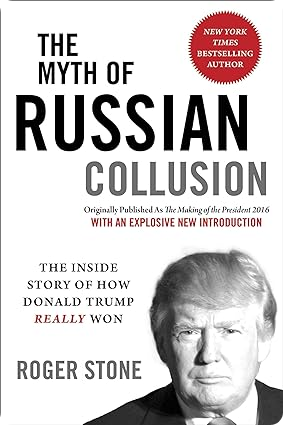
A Second Front Was Almost Opened Against Russia In Central Asia
Keep up to Date & Bypass the Big Tech Censorship
Get uncensored news and updates, subscribe to our daily FREE newsletter!
The larger context within which Kyrgyzstan’s latest law enforcement operation was carried out suggests that this foiled regime change plot was less about irreconcilable clan rivalries and much more about the US trying to make problems for Russia.
Kyrgyzstan confirmed on Tuesday that it arrested over 30 people accused of plotting a violent coup attempt in their geostrategically positioned country, which already experienced two Color Revolutions in the past two decades. The day prior, Kremlin spokesman Peskov expressed alarm at reports about the plot that was in the process of being foiled, while Foreign Minister Lavrov told Russian troops during his visit to their base in Tajikistan that Central Asia could become another front for Balkanizing their country.
In hindsight, the Hybrid War on Kazakhstan that broke out in early January 2022 was designed to divert Russia’s attention from Kiev’s then-impending NATO-backed reconquest of Donbass. This proto-front, for lack of a better description, failed to unfold due to the Russian-led CSTO’s decisive intervention. That in turn enabled Russia to preempt the West’s plans in Ukraine through the commencement of its special operation, which then morphed into the NATO-Russian proxy war that continues into the present.
| Recommended Books [ see all ] | ||||
|---|---|---|---|---|
 |  |  |  |
 |
Nevertheless, the Damocles’ sword of another Central Asian crisis continues hanging over the heads of Russian strategists due to the region’s innate conflict potential, both in terms of domestic ones like in Kazakhstan or international conflicts like the Kyrgyz-Tajik one from late last year. Neither variant requires that much foreign meddling to materialize since the socio-political (“soft security”) dynamics that are responsible for these scenarios are self-sustaining for a variety of reasons beyond the scope of this piece.
Kyrgyzstan is ignobly known as least stable of the Central Asian Republics (CARs) due to its history of internecine conflict that’s driven to a large extent by foreign intelligence-backed “NGOs” and irreconcilable clan rivalries. This combustible combination makes that country the greatest regional security threat by far, which is why nobody should have been surprised that it was in the news yet again earlier this week for narrowly averting another violent coup attempt.
The larger context within which the latest law enforcement operation was carried out, however, suggests that this foiled regime change plot was less about irreconcilable clan rivalries and much more about the role of foreign actors. Recalling Lavrov’s words the day before about how Central Asia could become a front for Balkanizing Russia, it could very well have been the case that NATO wanted to orchestrate another Kazakhstan-like Hybrid War crisis for diverting the Kremlin’s attention from Ukraine.
Kiev’s NATO–backed counteroffensive finally began on Monday but its initial phase was stopped according to the Russian Defense Ministry, which explains why the decision was made to blow up part of the Kakhovka Dam the next day exactly as one of its military officials admitted to plotting in December. Had the latest Kyrgyz coup not been thwarted, then that CAR could have been thrown into chaos sometime later this week in order to divide Russia’s strategic focus at the worst time possible.
Unlike the hot front that NATO unsuccessfully sought to open in Georgia a few months back, or the complementary ones that could still be pursued in Belarus and Moldova via their Ukrainian proxy, a Hybrid War in Kyrgyzstan would pose a qualitatively different sort of threat to Russia. The first three and the associated one of expanding the conflict into Russia’s pre-2014 borders could be dealt with through conventional military means while the Central Asian scenario might not be so simple.
The Kyrgyz government has already fallen twice to Color Revolutionaries in the past two decades, unlike the Kazakh one which still remained in power during last January’s crisis. If another violent coup took place there, then there might not be any internationally recognized authorities to request Russia’s conventional military assistance via the CSTO. An intervention in that case could then be spun as an “invasion” by demagogic clan leaders and amplified by foreign intelligence-backed “NGOs”.
If Russia still went through with one in the interests of restoring law and order, then it might not be able to count on its other CSTO allies. Furthermore, the locals might also resist them just as violently as some overthrew their government in that scenario, unlike what happened during the brief terrorist takeover in parts of Kazakhstan 1.5 years ago. If law and order isn’t restored, then refugees and terrorists might destabilize the region, while the rapid rise of a pro-Western regime could pose its own threats too.
The Kremlin would thus be thrown onto the horns of a dilemma whereby intervening could risk sparking an insurgency while refusing to do so could cede geostrategic ground in Central Asia to the US. It would already be difficult enough to decide what to do in and of itself, not to mention amidst the immense pressure of Kiev’s recently initiated counteroffensive and the consequences of it partially blowing up the Kakhovka Dam. The best-case scenario would of course be to prevent such a crisis in the first place.
That’s what just happened earlier this week, which could have speculatively been the result of Russian-Kyrgyz intelligence-sharing, but it would be wrong to conclude that the threat has passed. Central Asia will always remain vulnerable to Hybrid War threats, both those that are genuinely grassroots and take shape without any foreign involvement as well as the ones that require the latter to enter into their kinetic phase. There’s also the problem posed by overt Western outreaches to the region too.
Lavrov warned on Tuesday that “Today there are deliberate efforts by the West on assertive invasion, including humanitarian and military one, into Central Asia … The development assistance programs promoted by Western geopolitical engineers are in fact instruments of controlling and reformatting the political-economic landscape of the region as they see fit. We urge our friends to critically consider military cooperation and law enforcement training programs imposed by the West.”
This comes after the G7 showed that Central Asia is in their sights after including a paragraph about it in last month’s joint communique. Back in September 2022, Politico reported that the US was considering a scheme where it would swap Afghan aircraft for regional influence, though it remains unclear whether anything tangible came from it. At any rate, Lavrov’s latest warning on Tuesday isn’t fearmongering like critics might claim but based on credible threats to Russia’s interests, albeit latent ones for now.
His words from the day prior about how Central Asia could turn into another front for Balkanizing his country, meanwhile, represent a ubiquitous threat that’s unlikely to go away anytime soon. The latest such scenario was narrowly averted earlier this week, but there are sure to be many more. The US will pull out all the stops to score something that its propagandists can spin as a victory against Russia in an attempt to make taxpayers think that their more than $75 billion proxy war was worth it.


